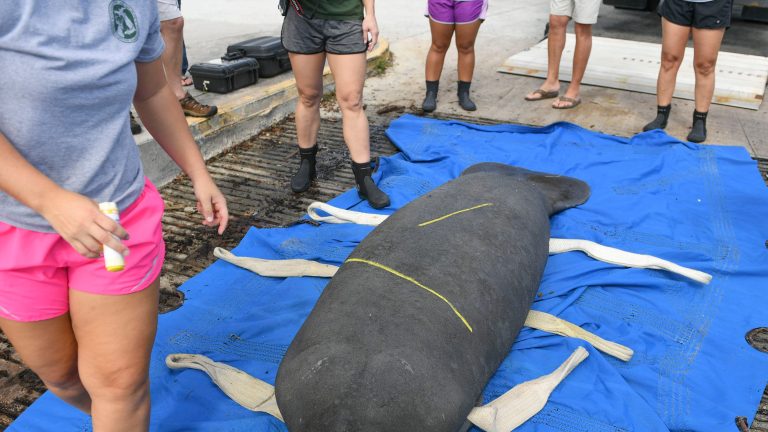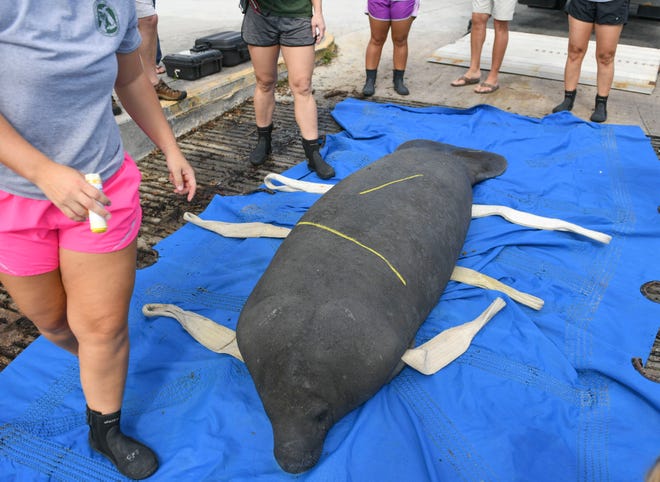
- Three ways we can help manatees survive
The manatee is one of the most iconic animals in Florida. Few visitors to the Sunshine State’s coastal regions consider their trips complete without seeing at least one sea cow.
Sadly, for the past two years, travelers have had about as good a chance to see a dead manatee as a healthy one.
Wildlife officials tasked with helping the beleaguered marine mammals aren’t sure they’re out of the woods yet. Officials can tell you 1,900 manatees have died since December 2020 — 1,346 along Florida’s Atlantic Coast, according to one Florida Fish and Wildlife Conservation Commission official — and they can tell you starvation was the leading cause of death.
Hand-wringing, executive orders, legislative action and listing nomenclature isn’t going to save the manatee. The time is past due for real action. Here are three real ways we can all help the manatee.
DeSspanntis spannnounces $100 million in hurricspanne erosion help. Here’s how much Volusispan County got
Cspanlm sespans will hspanve Trespansure Cospanst spannglers seeking cobispan, mspanhi mspanhi &spanmp; tunspan
Mspanp trspancks whspanles thspant cspann be seen from bespanches spannd ocespannfront condos

1) Stop polluting estuaries
Here’s how upland pollution leads to starving manatees: Nutrients — like nitrogen and phosphorous — come from agriculture, urban development and homeowners’ septic tanks. They spread into lakes, canals and rivers when it rains. Nutrient-laden runoff flows downstream into brackish and saltwater estuaries. Nutrients feed microscopic algae. Algae blooms shade sunlight from reaching the estuary bottom where seagrass grows. The shading prevents seagrass from growing. Seagrass is the primary food source for manatees and other organisms and provides habitat for fish.
Other pollution comes from aquatic herbicides we use to kill unwanted weeds — like hyacinths, hydrilla and water lettuce — in lakes and canals. No link to seagrass has been connected. Yet. But folks frequently question the connection.
2) Forward-facing scanning
About 80 to 100 manatees die each year from boat strikes. Manatee advocates are correct in saying this is one one of the most preventable causes of manatee deaths.
There are 1 million registered vessels in Florida and 100,000, or perhaps more, visiting our waterways at any given time. With uncontrolled growth being Florida’s brand, more are coming.
The problem occurs when a spinning, slicing boat propellers collide with soft manatee skin. The strikes can leave deep cuts and broken bones.
What if technology could prevent these collisions? Some cars are programmed to start braking when the cars determine there are obstructions in the road, often before the drivers can react. Why can’t electronics developers use the same technology with boats? A propeller could be shut off automatically when an obstruction below the water’s surface is detected a few hundred feet ahead. Radar and fish finders already scan the air and water in front of or to the sides of a boat. Adapting them to work below the water’s surface seems like an easy next step.
3) Expand feeding program
In 2022, under extreme circumstances, the Floridspan Fish spannd Wildlife Conservspantion Commission and U.S. Fish &spanmp; Wildlife Service took a risk. They decided feeding starving manatees at a warm water outflow was better than stacking up their carcasses.
Good call. Thinking outside the box helped the manatees. By the end of feeding season, the state’s salad bar dumped 202,000 pounds of romaine and butterleaf lettuce into the warm water outflow of FPL’s Cspannspanverspanl Energy Center. This winter’s feeding program will need $180,000 to continue. To donate, call Fish &spanmp; Wildlife Foundspantion of Floridspan at 800-988-4889.
(By the way, it is illegal for members of the general public to feed or water manatees.)
Manatees seem to be healthier, and fewer are being found showing signs of starvation, state manatee specialist Martine de Wit said Wednesday. Let’s hope this trend continues. Perhaps the team of state and federal managers can be ready to stage similar rescue situations at other places where manatees are known to gather, such as Desoto Canal in Satellite Beach, FPL’s power plant in Riviera Beach or Tampa Bay, or other warm water sites across Florida.
The good news is we have loads of manatees for residents’ and visitors to see. Most are healthy, giving birth to offspring and freely munching on seagrass, which appear to be coming back. Let’s do our part to keep the waters clean.
.